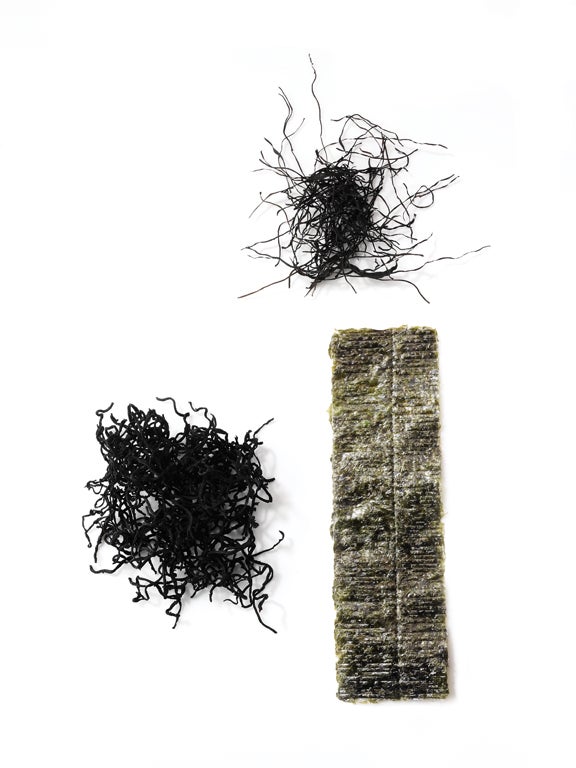Sea Vegetables

If the term “sea vegetables” makes you think of the kelp that squishes between your toes at low tide, think again.
Sea vegetables are a rich source of iodine, a mineral crucial for healthy thyroid function. They also contain lignans, compounds that may help inhibit tumor growth and reduce breast cancer risk. Their replete stores of folic acid may assist in protecting blood vessel walls and keeping heart disease and stroke at bay.
When properly prepared, sea vegetables have a firm, chewy texture and a rich, salty flavor. Try them in the following recipes, and experiment with several varieties in your everyday cooking.
Deep Sea Treasures
Slip sea vegetables into your favorite recipes using this handy guide
ARAME
Wiry dark brown strands with a mild sweetness and chewy texture.
PREPARATION Soak 10 minutes in cold water; drain, rinse, and chop smaller, if desired.
USES Arame’s dark hue contrasts beautifully with winter squash, greens, or white beans.
KOMBU
Wide strips or sheets of dried sea kelp, kombu adds depth of flavor to slow-cooked dishes.
PREPARATION No need to soak; add directly to hot cooking liquids.
USES Best for flavoring broths and soups. Remove before serving.
HIJIKI
Similar to arame, hijiki is bolder in flavor, with anise-like undertones.
PREPARATION Soak 10 minutes in cold water; drain, rinse.
USES Stands up well to cooking; can be used to flavor root vegetables, mushrooms, and beans.
NORI
Thin, dark green or brown sheets traditionally used to wrap sushi. Sold toasted or raw.
PREPARATION No soaking required; avoid cookingnori quickly disintegrates.
USES Cut into strips to garnish hummus, soups, salads, rice, or veggies.
DULSE
Red leaves or flakes with a salty, earthy taste.
PREPARATION Soak 10 minutes in hot or cold water; drain, and rinse.
USES Good in soups, stews, and sauces. Can be used to replace hijiki or wakame.
WAKAME
Mild and slightly sweet, wakame turns bright emerald after soaking.
PREPARATION Soak 15 minutes until soft; drain, and rinse. Heat gently, if at all; wakame gets slimy when cooked.
USES Adds flavor and nutrients to lentils, soups, and salads.